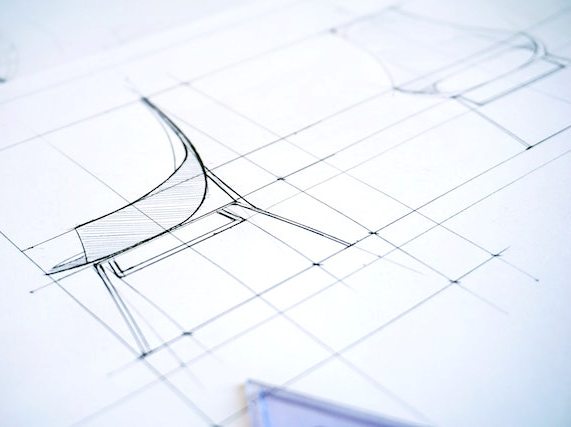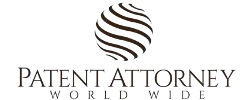How patent attorney write a patent application
A patent attorney writes a patent application by gathering information about the invention, conducting a thorough analysis of prior art, and understanding the technology involved. They then draft a detailed description of the invention, including its novelty, utility, and inventive steps. The patent application includes claims that define the scope of protection, meet legal requirements and effectively communicate the unique aspects of the invention.
Table of Contents

“A good patent application written by an experienced patent agent/attorney should adequately cover the scope of your invention and should survive not only through the examination phase till the grant of patent but also it should survive the commercialization phase where actual money is made by licensing or selling patent rights, where competitors should not be able to work around your patent.”
Writing patent application is a specialized skill
Let’s review the outcome expected from Patent protection. a patent should :
- Provide broadest possible protection to our innovative ideas
- Competitors should not be able to copy or compete with our invention without our consent
- Competitors should not be able to work around our patented invention and build similar solution without infringing on our patent (this is the most important point)
- we should be able to monetize the patented invention by
- by producing patented invention without competition
- by licensing it to other company to get royalty payments
- by completely selling the patent rights to other business
and get significant monetary benefits for your efforts
writing a patent application around the novel feature of the invention needs a very balanced and scientific approach that has to take into account the technical as well as the legal side.
Going too broad or too narrow protection while writing claims would be a mistake.
“Claims should not be too broad because those would be anticipated by existing prior arts, and the claims should not be too narrow because competitors would be easily able to design around our invention”
You may be surprised to know, that patent drafting does not begin with the title of the invention or the abstract; In fact, most Patent attorneys/agents first draft claims !!!
Claims are the most important part of the patent application.
- Claims decide the boundaries of the protection that you would be getting for your invention
- Claims are used to enforce your patent
- Claims decide whether the competitor is infringing on your patent
- Claim are closely examined in the patent examination phase at UK IPO
- Claims are the most difficult part of patent application to write
Of course, there are other dependencies and rules for other parts of patent applications when deciding scope but it is the claim which stands most important thing that decides the future of your patent.
Important things about claims
The purpose of the claim is to define the invention protected by the patent.
The reason patent agent or attorney starts with writing claims first, because once we have a complete set of claims providing appropriate protection to the invention and which are approved by you (inventor), then writing remaining parts of the patent application like detailed description, abstract and summary becomes easier as these parts generally follow the boundaries set by claims.
How to review claims? written by patent agent or patent attorney ?
To be honest, a patent agent or attorney is the most appropriate person to write and review claims with you, however, there are some important things to consider :
- Since claims define the scope of legal protection, it is suggested that they should be drafted carefully to cover all the aspects of the protection being sought at the same time adequately distinguishing the prior art from the claimed invention.
- Unity of invention and clarity of claims
- a) Claim(s) of a Complete Specification shall relate to a single invention, or to a group of inventions linked so as to form a single inventive concept.
- b) Claims shall be clear and succinct and fairly based on the matter disclosed in the specification.
- Rules for writing preamble such that it should not be limiting the scope of the invention
- Rules about using appropriate transition like “comprising” “consisting of”
- What is not claimed in the claims stands disclaimed, and is open to public use, even if the matter is disclosed in the description.
- Each claim is evaluated on its own merit and, therefore, if one of the claims is objected, it does not mean that the rest of the claims are invalid.
- it is therefore important to make claims on all aspects of the invention to ensure that the applicant gets the widest possible protection.
And there are many rules and standard practices that a patent attorney or agent would be incorporating while writing claims for your patent application. In short,
“Claims should be written in such a way that they would not be invalidated in the litigation phase and they would not allow competitors to practice the invention without infringing on patented invention”
Important things about drawings

It is required to include the drawings which help in explaining the invention wherever it is appropriate to do so, if not done the patent application would be rejected or require submission of relevant drawings to describe the invention.
- the drawing plays a much more important role than just illustrating the invention to be patented.
- the drawings are also used to define the scope of the disclosure of the invention and claims of the invention.
- If in case your invention disclosure has not explicitly included some features of the invention but they are present in the drawings of your invention, then the drawings can be used as a basis to support the claim that talks about that particular feature. In other words, claims can find support in drawings even though it is not explicitly mentioned in the detailed description of the invention
hence it is important to consider drawing as a significant part of a patent application and it is required to handle it with care while writing the patent application.
Even though you do not want to go for professional drawings (which is recommended to do) you can submit hand-drawn sketches along with the patent application as long as those sketches are readable, can be comprehended, and related to the invention disclosure. such hand-drawn sketches are called informal drawings. but it is recommended to go for formal drawings as long as possible.
in general drawings include:
- Flowcharts
- Graphs
- Tables
- perspective view of the device
- front view
- top view
- side view of Elements
- the sectional views of elements
- illustrations of the invention in use
Writing patent specification
And Just like claims and drawings, there are many rules and standards for writing other parts of patent specification like:
- Title of the invention
- Referenes of application
- Abstract
- Background of the invention
- Brief summary of the invention
- Brief description of drawings
- Detailed description of invention
- Field of invention
- Include references to cite
- disclosing best mode
- covering all possible embodiments
and many more… below are the documents on the K IPO website you can read to get additional details about patent drafting rules and standards.
- Patent factsheets: description PDF, 201 KB, 2 pages
- Patent factsheets: drawings PDF, 145 KB, 2 pages
- Patent factsheets: claims PDF, 175 KB, 2 pages
- Patent factsheets: abstract PDF, 121 KB, 2 pages
Source : https://www.gov.uk/government/publications/patent-fact-sheets UK IPO website under the Patent fact sheets section
How patent attorney works on your invention
when you think about a near-perfect patent application that properly protects your invention, there are few things a patent application should do:
- The claims for the invention are written appropriately such that claims are broad enough to stop competitors from working around the invention and at the same time claims are narrow enough not to be anticipated by existing prior art
- Describing the invention in enough detailed manner such that the person skilled in the art should be able to understand and practice the invention, that is it should be enabling description of the invention.
- All possible variations and embodiments of the invention are covered.
- Claiming the invention in such a way that it will survive not only prosecution (that is till the grant) but also it will survive the litigation phase (after the grant). And licensing phase (that is making money with the patented invention)
- Describing the best mode of practicing the invention
- and in case you (inventor) decides to go for foreign filing a patent application should be able to facilitate foreign filing/ international filing.
- and of course, the patent application should be following all the rules and laws about how the patent application should be written as required by patent law.
based on all of these inputs the patent attorney creates the final draft of the patent application along with the drawings to be reviewed by the inventor. And upon receiving the final draft of the patent application you (inventor) should review it line by line keeping in mind the scope of your invention that you want to be protected.
all the corrections such as adding information, removing information, or editing existing information is to be done with track changes enabled document editor, search that your corrections would be appropriately grasped by a patent agent or attorney. and after considering suggestions and changes the patent application is ready to be filed in UK IPO.
